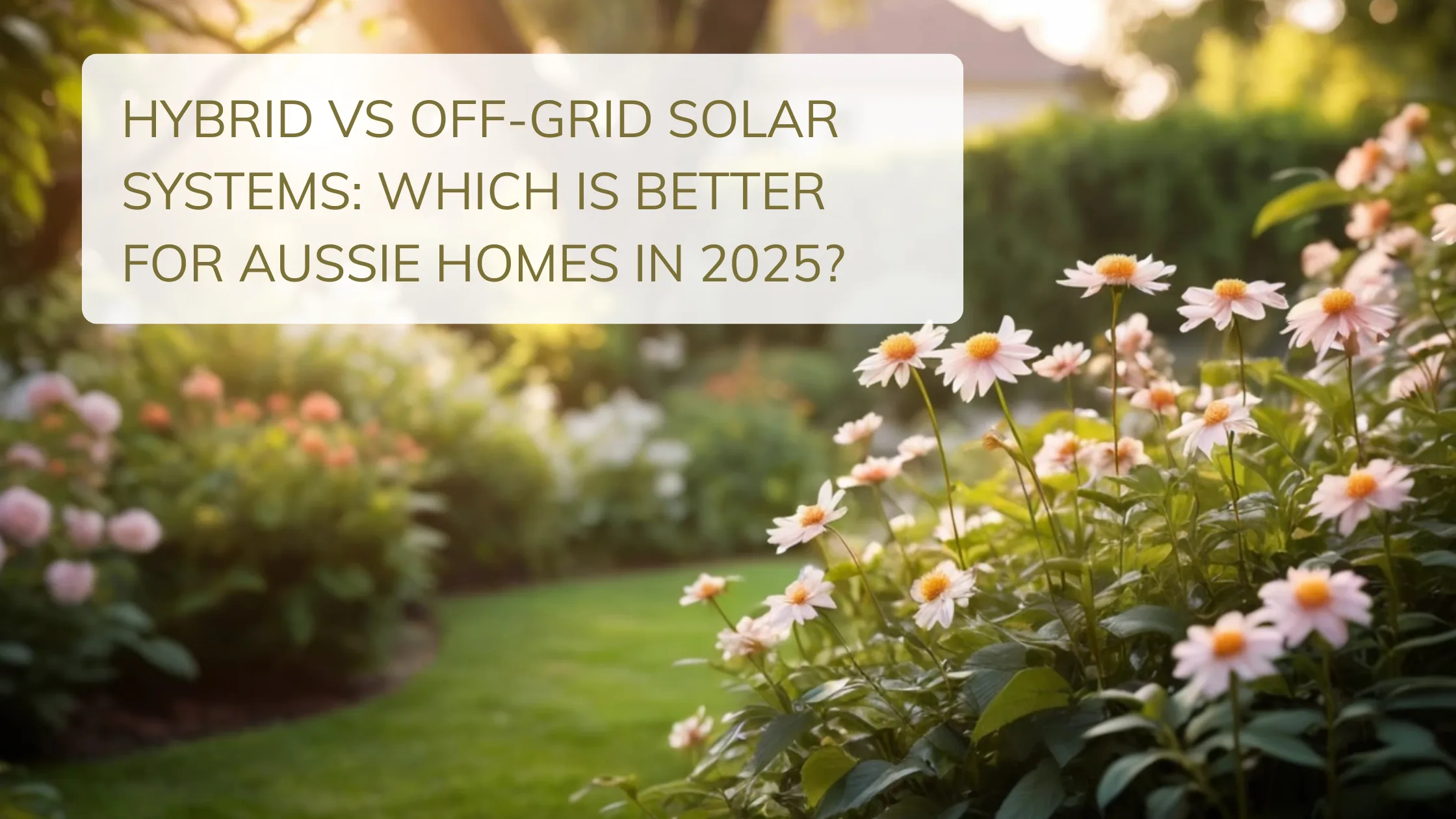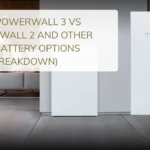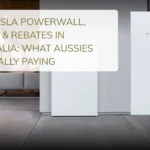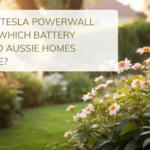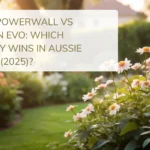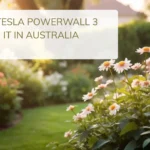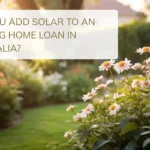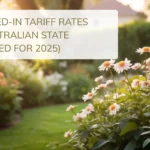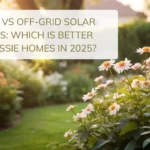Let me tell you — when I first looked into getting solar for my place outside of Perth, I didn’t even realise there were types of solar systems.
I thought solar was just… well, solar. You stick panels on the roof, slap on an inverter, and boom — lower bills.
But then came the questions from the installer.
You want hybrid or off-grid?
I blinked. “What’s the difference?”
So began my deep dive into the weird but important world of hybrid vs off-grid solar systems. And if you’re on the same journey, here’s what I learned — from real people, real quotes, and a couple of headaches along the way.
First Things First: What’s the Difference?
Hybrid Solar
A hybrid system is connected to the grid, but also has a battery. So you:
- Use your solar during the day
- Store excess in the battery
- Use the battery at night
- And if all else fails? You pull from the grid
Basically, it gives you more independence, but not 100%.
Off-Grid Solar
Off-grid means you’re completely disconnected from the power grid.
- No backup from your energy company
- 100% dependent on your panels, batteries, and maybe a generator
It’s energy freedom… with responsibility.
Why I Considered Off-Grid
We live semi-rural — just outside Byford. Not fully remote, but close enough that our power goes out way more than it should. Stormy nights, car hits a pole, whatever — we’ve had blackouts that lasted half a day or more.
I figured, maybe off-grid was the way to go? No more reliance on dodgy infrastructure. Just my own solar kingdom.
But then I talked to a few locals and got some reality checks.
Real Stories from Real Aussies
Greg in Bullsbrook (Went Off-Grid in 2021)
Mate, it’s peace of mind… until it’s not. If the battery runs low and there’s no sun? You’re stuck unless you’ve got a genny. Which I do. And I’ve used it more times than I expected.
Greg spent nearly $28,000 for his system — big panels, 15kWh lithium battery, backup generator. He loves the idea of being self-reliant but admits:
- You have to actively manage your power
- Can’t run everything like you used to
- And you’re on your own if something breaks
Karen in Fremantle (Hybrid Setup with Redback System)
We went hybrid last year. We get solar most of the day, battery handles the evenings. If we run out, we pull from the grid. But that almost never happens.
Karen’s system cost her around $14,000 with a mid-sized battery. She still pays a small bill every quarter, but only about $60–$80.
Me – Still Deciding, But Leaning Hybrid
After seeing both setups and running the numbers, I realised something — off-grid is awesome if:
- You’re really remote
- You’re happy to manage your usage closely
- You just hate power companies
But for most suburban or semi-rural folks? Hybrid gives the best of both worlds.
Let’s Break It Down: Pros & Cons
Hybrid Solar Systems
Pros:- Lower upfront cost (~$10k–$18k)
- Grid backup = less stress
- Eligible for rebates and feed-in tariffs
- Can run most appliances normally
- Still a small grid bill if you run out of battery
- You’re not fully “independent”
Off-Grid Systems
Pros:- No more power bills ever
- Full energy independence
- Great for remote areas with poor grid access
- Expensive upfront (~$20k–$35k+)
- No grid = no help if you run out
- Must oversize battery and system to stay safe
- Maintenance falls entirely on you
Batteries: The Big Cost
No matter which system you choose, batteries are where the money goes.
Most hybrid systems have 7–13kWh batteries. Off-grid setups need at least 15–25kWh, or more if you’re running fridges, pumps, washing machines, and the like.
I got quotes like:
- 6.6kW panels + 10kWh Redback battery (Hybrid): ~$13,800
- 6.6kW panels + 20kWh BYD + Generator (Off-Grid): ~$26,500
One installer straight-up said:
Off-grid is like buying the deluxe version of solar. Worth it if you need it, but not for everyone.
Rebates & Feed-in Tariffs
Here’s something I didn’t know: Off-grid homes can’t claim feed-in tariffs, because there’s no grid to feed into.
But with a hybrid system, you can:
- Store what you need
- Sell the extra
- Claim federal STCs (rebates)
- Even get state battery incentives (WA, SA, VIC etc.)
Who Should Go Hybrid?
- City and suburban homeowners
- Anyone with unpredictable usage patterns
- People who want reliability but hate big bills
- Families who want energy backup but don’t want to babysit their system
Who Should Go Off-Grid?
- Rural or regional Aussies with weak/no grid connection
- People who value independence over convenience
- Off-the-grid lifestyle folks (tiny homes, bush blocks, homesteaders)
- Prepared to spend more and manage power usage day-to-day
Final Verdict (From a Bloke Still Choosing)
If I lived 30 minutes further into the bush, I’d go off-grid tomorrow. But being 25km from Perth, with reliable grid and cheap feed-in rates — hybrid makes more sense.
You get:
- Power during the day
- Battery backup at night
- Grid backup just in case
- Lower bills without the high risk
And if energy prices keep rising? I can always add more battery or disconnect later.
Want My Installer Quote Comparison Sheet?
I made a spreadsheet comparing hybrid vs off-grid quotes — price, capacity, battery size, and what each installer promised. If you want a copy, drop a comment or message me and I’ll share it.
Hope this clears things up a bit — because let’s be honest, solar’s confusing. But worth it? Absolutely.
